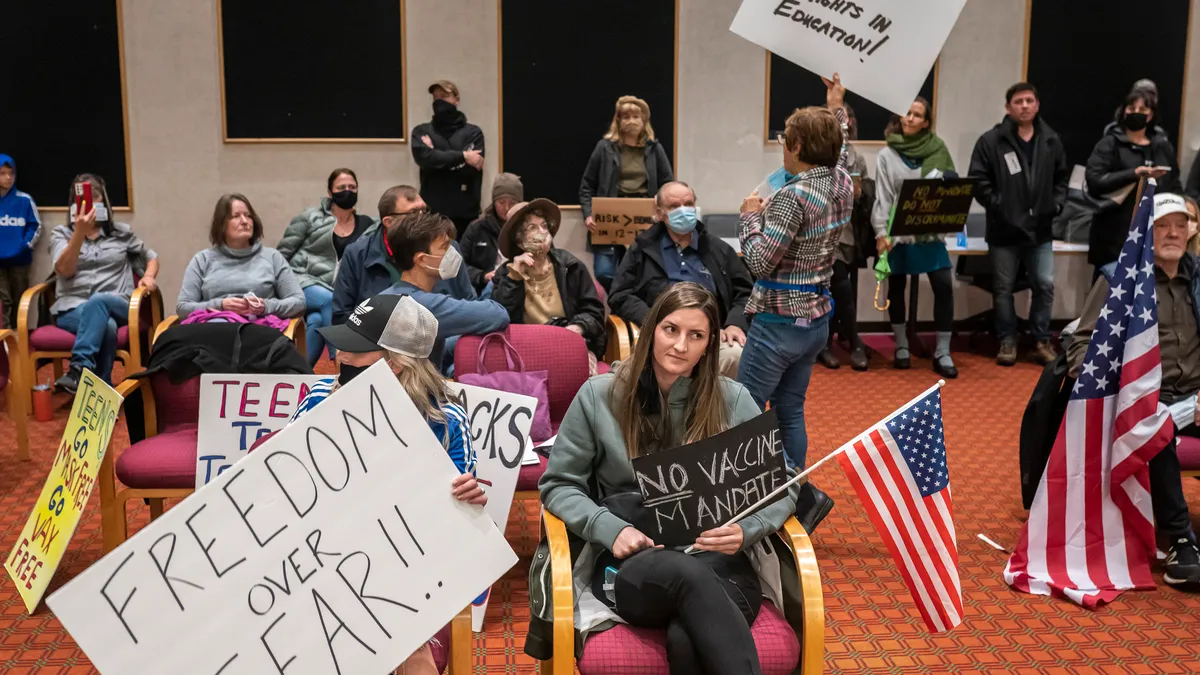A number of education leaders from across the country convened in Washington, DC, Tuesday for The Atlantic’s third annual education summit. The discussion ranged from school choice and teacher quality to equity and the implementation of technology and civics in the Trump era as district leaders, heads of schools, researchers and policymakers all gathered to share ideas and challenges.
Here are three major themes that arose during the day-long summit:
A focus on teaching and learning for ALL students
Urban and rural areas often face the greatest challenges in recruiting and retaining teachers, and it is usually students in these areas who are in schools that are overcrowded, often underfunded and underresourced.
“Nothing’s still working,” said Oklahoma City’s KIPP Reach College Preparatory Principal Tracy McDaniel. “Kids are still not learning in the inner city. We’re still not getting it right.”
Even though budget shortfalls are massive — National Governors Association Legislation Director for Education & Workforce Committee Stephen Parker said “if the federal government does abandon [states with the education budget], we do not have the funding levels” to make up the gap — McDaniel said it is important to look at the conversation in terms of “what is the cost of not educating a child.”
The answer, he suggests, is, “We’ve got to focus on teaching and learning.”
"An underperforming teacher in your fifth-grade classroom can take your life, and it'll be 20 years before you know it," said Derrell Bradford, executive vice president of 50CAN. “Just because kids go to school and they come home happy at night doesn’t mean they’re not being denied” a quality education.
American Federation of Teachers President Randi Weingarten echoed McDaniel’s sentiments about a need to focus on teaching and curriculum, but added there must also be an emphasis on "teaching teachers how to teach — including cultural competencies."
“I hear a lot about the achievement gap,” said DC Public Schools Chancellor Antwan Wilson, “and what has been surprising is the degree to which people realize that equity matters.”
But whether it matters or not, there is still not much progress being made to close the gap.
“We actually have closed the achievement gap more in the first 25 years [after integration] than the last 25,” she added.
Part of this issue has been a poor framing of the conversation. Wilson said, “When we talk about an achievement gap, we must also talk about an opportunity gap and a belief gap.”
The problem of caring, well-meaning educators projecting lower expectations on black and brown students or students from low-income backgrounds than they project onto middle-class or affluent white students is one of the greatest impediments to student achievement, he said.
“Young people need to be surrounded by people who believe in them, who have high expectations and who love them.”
To begin unpacking their own biases, Wilson said, educators must first disaggregate conversations of race and class and begin to consider the impact of each separately on the learning experience for students.
“We have to talk about the intersection of race and education, and we have to talk about, certainly, the role that it plays even separately from economics and income level. Oftentimes it’s easier to talk about income level,” because people don’t want to deal with race, but “we have to think about ways to challenge perceptions that are made about certain groups of students across socio-economic” and racial groups, he said.
This focus, Wilson said, has to come from the top. “Leadership matters and how we situate ourselves to align with the central American values of liberty and quality education for ALL matters,” he said.
Community involvement
A recent report from researchers at the United Negro College Fund’s Frederick D. Patterson Research Institute found that in African-American communities in particular, community members want to be involved in the education conversations affecting their children and youth. Engaging individuals from the barber shop, local churches, community centers and other places of familiarity for students is one way to bridge the gap between schools and families and to improve outcomes for all students.
Too often, education is something that is done to students and families and communities, rather than with them.
“In most inner cities,” McDaniel said, “there’s no choice. When you look in the suburbs, kids have choice, but in the inner cities, kids are just trapped.”
The same can be said for students in rural areas.
“Everyone wants to feel that they have control over their schools, that someone from the outside” isn’t making all of the decisions for them, said Andy Smarick, Morgridge Fellow in Education at the American Enterprise Institute. “How emasculating to take kids and say you’re assigning kids to a school that doesn’t work and there’s nothing you can do.”
Early childhood education
“The 5-18 [K-12] system was predicated on the notion of full-time maternal care as being the early childhood model,” said Katharine Stevens, AEI’s Resident Scholar on Education Policy Studies. Since that’s overwhelmingly not the case for many families today, Stevens and many other early childhood advocates say the conversation needs to start at birth.
According to Stevens, 98% of state funding for education goes to the K-12 system. “You’ve go to rethink how you’re allocating some of this money,” she said.
But former Maryland legislator and current Save the Children Action Network President Mark Shriver posited that reinvesting some of that money into early childhood education might be a tough sell, politically, as legislators try to justify even more cuts to schools and balancing budgets in the state house.
“While people think [early childhood education] is important, I don’t think they think it’s more important than cutting tax,” said Helene Stebbins, a senior policy director at the Alliance for Early Success.
But Stevens said an investment in early childhood education would eliminate much of the need for remediation later on in students’ academic careers because they would “get it right from the beginning,” which would ultimately save states money on the bottom line.
Advocates must do a better job, especially in Republican states, of making the connection between the business case for investment in early childhood education and the future of the workforce.
All governors care about and really hold themselves accountable for two things, Parker said: how many jobs they’re creating and how much money those jobs are bringing back into the state.
“If you’re meeting your short-term goal of getting people into the workforce, but at the expense of your long-term goal, which is the future workforce,” then where does that leave you, Stevens asked.
New York has had some success with a universal pre-school model, and it is largely because the model focused on access to early childhood education for all students in the state, appealing to the middle base of voters who carried the recent election, rather than programs that focus explicitly on low-income children, which may come with some animosity from other voters and thus are more politically controversial.
This is “not a debate for reauthorizing Head Start,” said Parker.




















